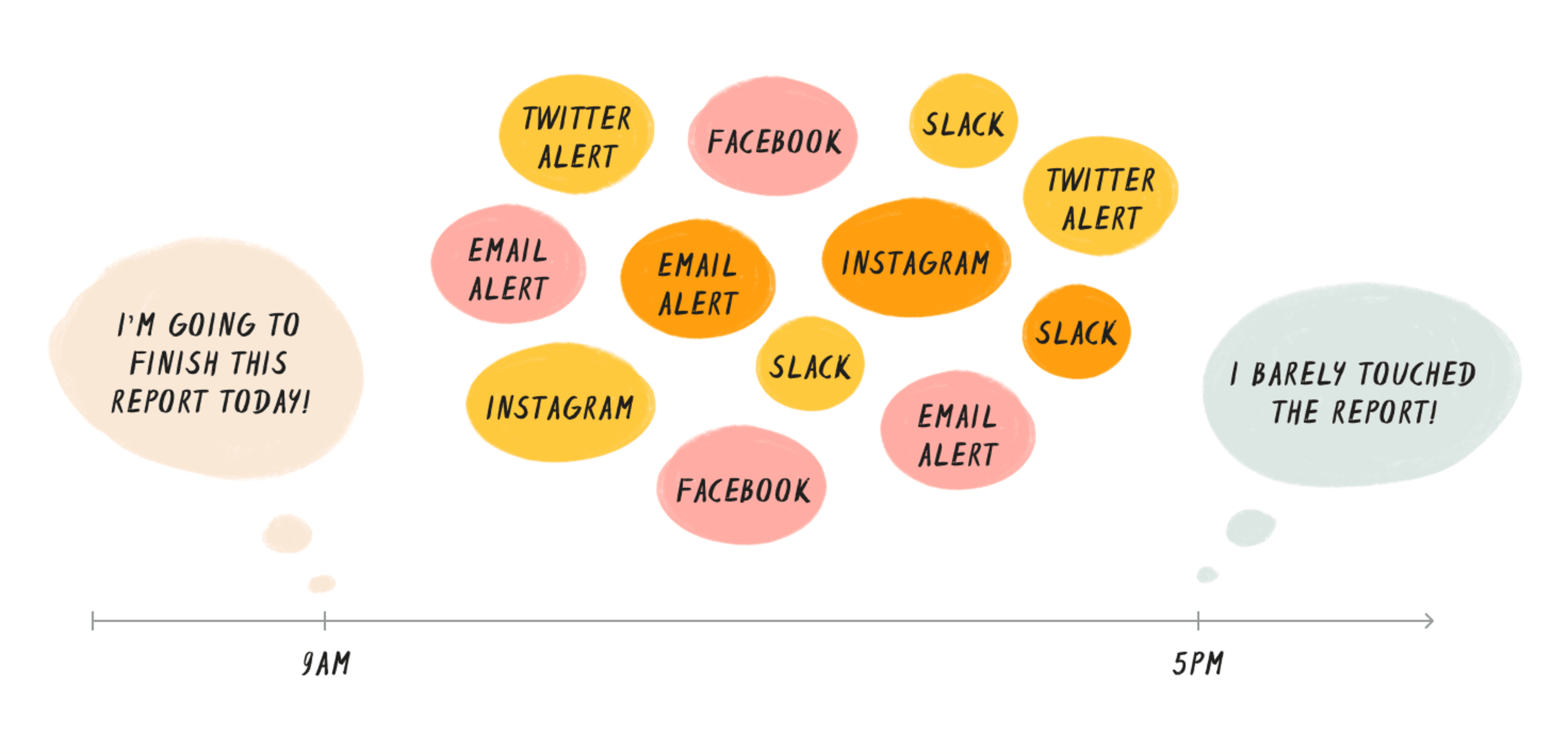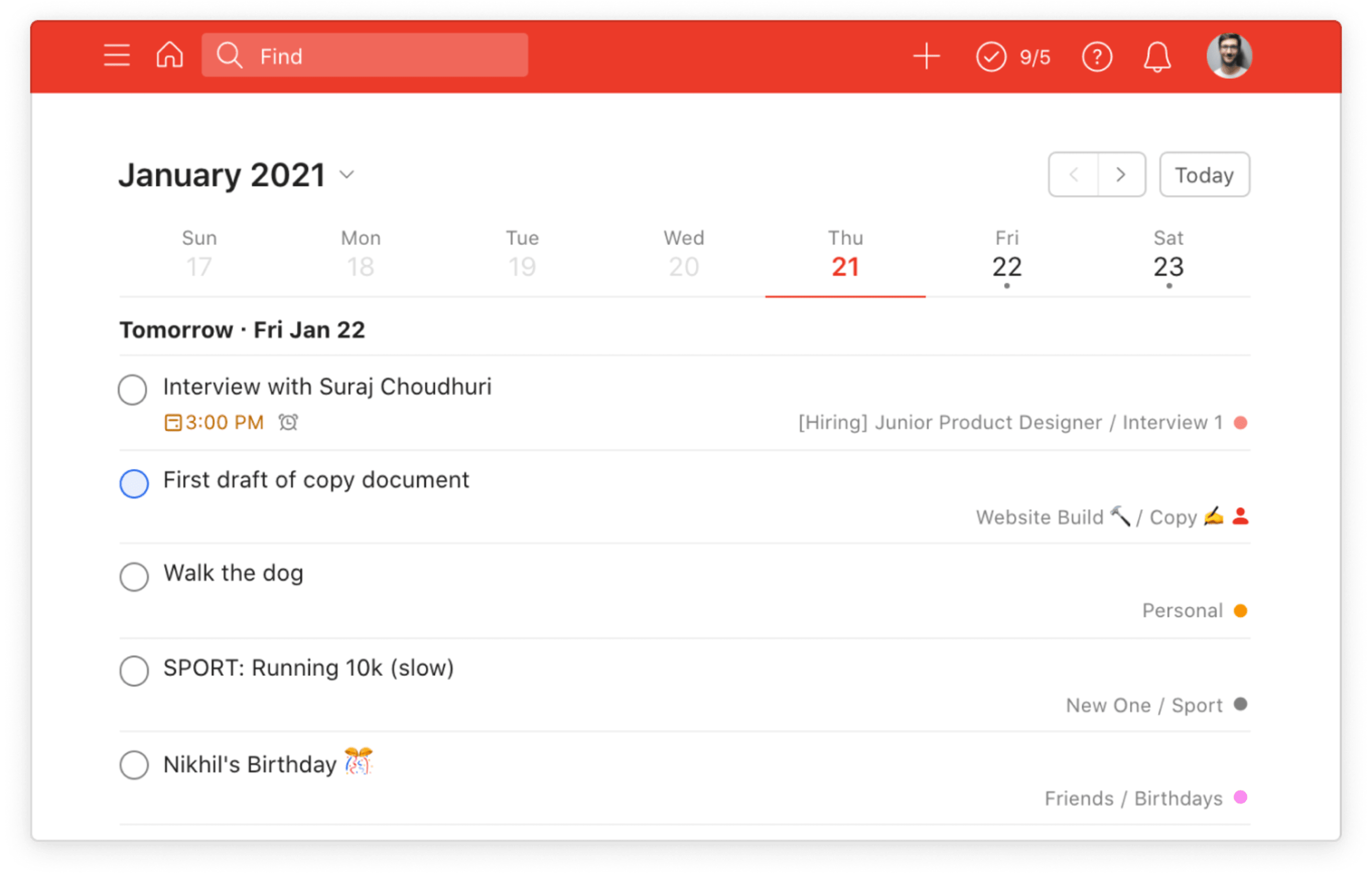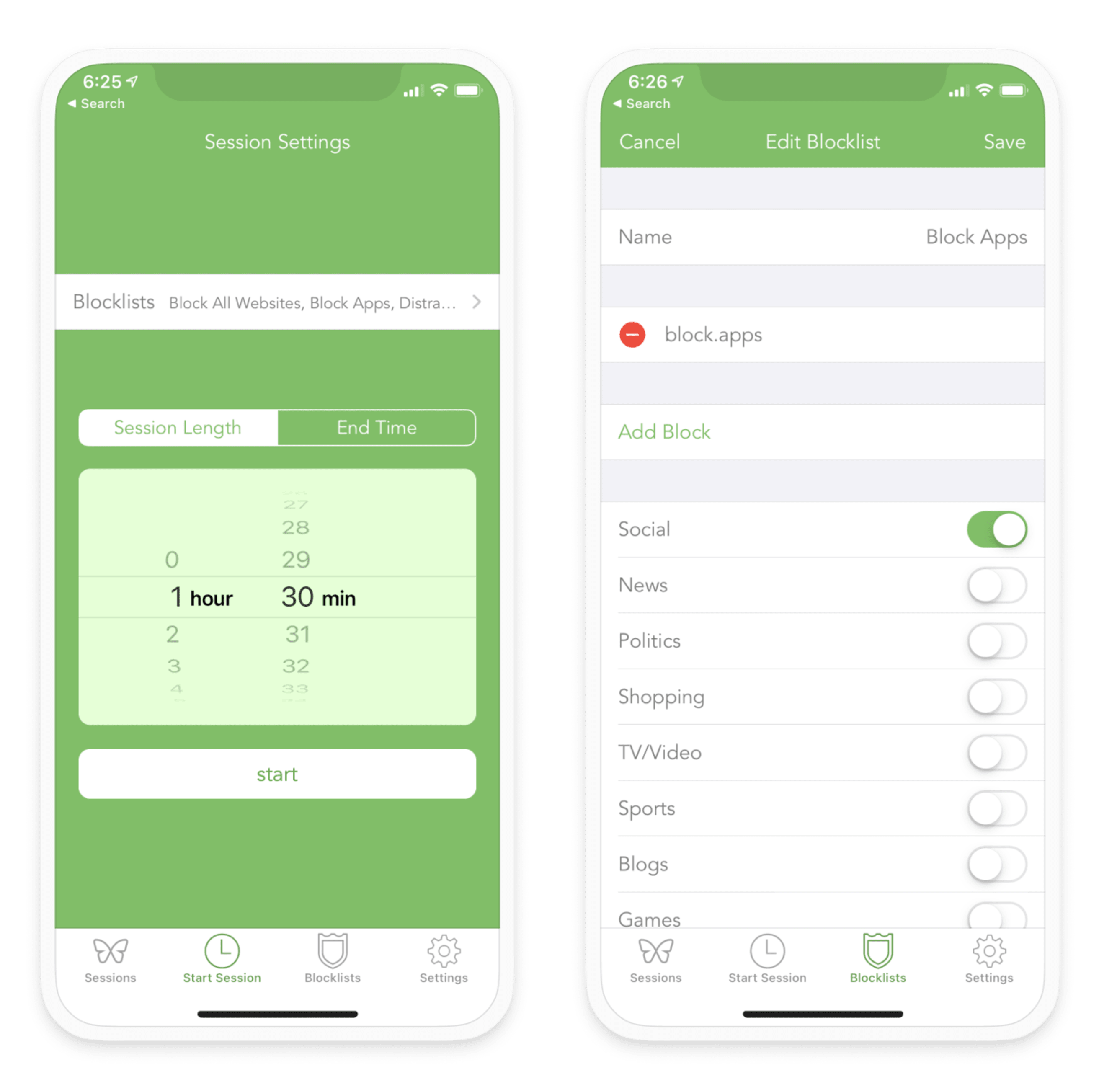You probably won't finish this article. In fact, I may have already lost you to another tab in your browser. Or an email from your boss. Or a ping from a coworker. Or any number of other digital distractions that have come to define modern life.
More and more, our work days feel like a Herculean struggle between emails, messages, and news alerts on the one side, and our beleaguered attention on the other. With the added pressures that come with working from home, the average work day can feel like an endless spinning of wheels.
There’s a name for that all-too-familiar experience of toggling between screens, apps, and tasks in response to interruptions: context switching. And there’s a reason — well many reasons — it’s so difficult to get things done when context switching is your daily reality.
This guide delves into the attention tax you incur each time you toggle from one thing to another, why it’s something that almost all of us struggle with, and the concrete strategies you can use to bring more focused calm to your workday.
What is context switching?
The term context switching was originally used in computing to describe how operating systems run multiple processes from the same central processing unit: when we switch apps, our computers shunt processing power from one request to another, putting the first on hold until we come back to it.
While our technology can handle context switches without missing a beat, our human brains cannot. Each time we're interrupted mid-task, we pay a tax on our time and attention.

Say you’re writing a report, and you get a notification about a new email. Out of habit, you tap the notification to see if it's anything important. You just switched contexts from your report to your inbox. It's a request from your boss for some data. No big deal, she doesn't need it until the end of the week. You mark it unread to come back to later and go back to your report.
The interruption lasted no more than five minutes. But as you get back to your report, part of your attention remains on the email. That's called attention residue and it makes it harder for you to finish the report. Sophie LeRoy, a researcher from the University of Minnesota and an expert in human attention, describes the effect of interruptions this way:
“People experiencing attention residue after switching tasks are likely to demonstrate poor performance on that next task. The thicker the residue, the worse the performance.”
That means the cost of checking your email wasn't just the five minutes it took away from your report — you also paid an attention tax in lost time and productivity that's no less real but much more difficult to quantify. And that's just the toll of one context switch. The modern knowledge worker spends all day bouncing between countless tasks, programs, screens, and tabs. As a Microsoft study found:
“The more time in email and face-to-face interaction, and the more total screen switches, the less productive people feel at the day's end.”
The more your attention is divided, the harder it becomes to stay focused on any one thing in a vicious cycle that ends in mental exhaustion with little to show for it.
Why do we context switch?
Context switching takes a heavy toll on our attention and productivity, yet it's become so natural to us we often don't even realize we're doing it. Why is it so hard to stay focused?
Our digital tools are designed to interrupt
Digital technology has rapidly transformed how we work and live, and our use of social media, team communication, and other apps has mushroomed. From just 2015 to 2018, the average number of apps used per business increased by 43%, according to Bain and Harvard Business Review. As Dropbox puts it, this has created a “complexity explosion”:
“Every tool or service we add creates a new network of collaborators and notifications, adding fresh complexities and interdependencies.”
With features like notifications and unread message symbols, our technology is designed by default to interrupt us. As Recode writes:
“The problem is, sending a message is much easier than figuring out how to get fewer messages or finding and enabling the software’s various options that could make you more productive.”
Most workers can’t go 6 minutes without checking email or instant message, according to Rescue Time. Even if we don’t respond, seeing that new text or missed call diverts our attention enough that we struggle to focus on a task-at-hand, researchers at Florida State University found. In fact, just having the phone in the same room, even if we’re not looking at it, wears down our cognitive resources, according to a study in the Journal for the Association of Consumer Research.
We're swimming drowning in information
As early as 1255, Dominican friar Vincent of Beauvais observed: “The multitude of books, the shortness of time and the slipperiness of memory do not allow all things which are written to be equally retained in the mind.”
If Friar Beauvais was overwhelmed then, let’s appreciate how much overload we’re dealing with today. Because of our technology and the complexity of society, we are swimming — and often drowning — in information. An average executive’s yearly communications rose from about 1,000 in the 1970s to over 30,000 in the 2010s, or 1 communication every 4 minutes, according to Okta. Libraries, information science professionals, and computer scientists are struggling to develop systems to manage it all.
Even when valuable, information in our modern environment feels like noise.
Work culture rewards responsiveness
Context switching is inevitable in "always on," workplaces, where there’s a real or perceived expectation that team members respond immediately to emails and team messaging tools. Though it probably isn't intentional, these workplaces make it more difficult for their employees to get any work done, by rewarding and reinforcing them for being responsive and constantly available.
Even in 2004, before the age of apps, Carnegie Mellon researchers found that workers spent an average of only 3 minutes on a task before switching. Although many workers go to “great lengths” to filter out interruptions, only 13% have broached the subject with their bosses or co-workers, and only one-third came to a resolution, according to a Rescue Time study. It’s a huge change from earlier eras, when work was much more segmented and workers usually focused on one type of task at a time, say filing, before moving on to the next, like correspondence.

Our brains crave novelty
Interruptions aren’t just external. We're actually just as likely to interrupt ourselves as we are to be interrupted. How many times have you had a meeting-free afternoon only to spend it going down a Reddit rabbit hole?
In The Shallows: What the Internet is Doing to Our Brains, Nicholas Carr explains how our brain, through neuroplasticity, adapts in response to changes in our environment, like technology innovations, which means we gain and lose certain skills. Social media, email, and team communications tools stimulate our very human desire to want to connect with people and access novel information but diminish the focus and processing skills that our literacy culture of books and newspapers built up. As Carr writes:
“[E]ach interruption brings us a valuable piece of information… And so we ask the Internet to keep interrupting us, in ever more and different ways. We willingly accept the loss of concentration and focus, the division of our attention and the fragmentation of our thoughts, in return for the wealth of compelling or at least diverting information we receive.”
Moreover, like slot machines, tech features such as notifications and infinite scroll are designed to activate the brain’s love of unpredictable novelty, which stimulates production of the pleasure-associated chemical dopamine and keeps us coming back for more. And when multiple things are in front of us, like a bunch of browser tabs, we want to look at all of them.
Scientists are still working to understand the full implications of our technologies on human psychology and neurobiology, but it’s clear our brains react eagerly to distraction.
The "tax" we pay for each context switch
We context switch because our environments incentivize it, and because it helps us stay in the know. But at what cost?
Kills productivity
When we context switch, our brains receive multiple stimuli at once. This leads to a “response selection bottleneck” that slows thought and decision-making. Upon returning to a task after a distraction, it can take up to 23 minutes to re-focus. Even “brief mental blocks” as a result of switching can take as much as 40% of a person’s productive time.
Impedes cognitive function
Every time we switch contexts to check a new message or chat, we flood our brains with information — those report statistics, the phrasing of that email, the news on social media — on top of whatever you're already dealing with. But our “working memory storage capacity,” or how much we can keep in our head at once, is pretty limited.
We can hold between 3 and 7 pieces of information at a time. By flooding us with new information, context switching takes away the brain space we need to retain and process the information we were already dealing with. In fact, people who try to juggle messages and work see an IQ decline of 10 points — equivalent to missing a night of sleep and more than twice the drop after smoking pot.
Diminishes attention
Isaac Newton said: “If I have made any valuable discoveries, it has been owing more to patient attention than to any other talent.” Our attention is one of our most important resources. But it is heavily taxed when we’re switching between multiple interfaces, or, as psychologist William James put it when our mind is in a state of “gray chaotic indiscriminateness.” When our attention is split, we struggle “to integrate fragmented information into cohesive task structures that make sense,” as a Carnegie Mellon paper describes.
Depletes energy
As Catherine Price, author of How to Break Up with Your Phone points out, our brains just can’t keep up with our phones. Going between multiple screens and apps gives us a buzz from adrenaline and stress hormones, but at some point we crash, and our energy drops. If we’re constantly living in this mode, we have no space to restore and renew.
Confuses priorities
The stress of moving busily between tasks causes our focus to narrow to what’s right in front of us. With diminished capacity to step back, strategize, and focus on higher priorities, we default to working on more immediate, low-value tasks, like responding to emails as they come in. We also revert to “survival mode,” where our instinct is to compensate for our stress by accomplishing something — anything. However, in our depleted capacity we go for the low-hanging fruit — again, those emails, which we can easily send — instead of writing a report, or reading an article, which takes more time and thought.
Strategies to prevent context switching
Preventing context switching has many benefits: finishing work earlier so it doesn't bleed into our leisure time, putting us into the zone of deep work or flow that allows us to do our best work, and bringing ourselves just a bit more calm in a noisy world. Here are nine concrete strategies to incorporate into your day:
Capture tasks somewhere that’s not your head
Just thinking about another task splits our attention and makes it harder to focus on what's in front of us in the moment. The problem is, our brains are wired to fixate on incomplete or interrupted tasks, a cognitive bias known as the Zeigarnik Effect. However, studies show that simply making a plan to complete a task later helps to reduce repetitive thoughts about the task.
Designate a place to add and organize your tasks that’s not your head: a pen-and-paper to-do list or a digital task manager like Todoist. By capturing tasks to come back to later, you can free your attention to focus on your immediate work, not remembering what you need to get done in the future.

Have a go-to framework for prioritizing tasks
Focusing on one thing at a time starts with deciding what that thing will be. However, when your priorities aren't clear, deciding what to do can become its own distraction. Get clear on what's important to you with a go-to framework you can apply over and over again to decide what to focus on.
- Distinguish between high-value, non-urgent tasks and low-value, urgent ones with the Eisenhower decision matrix.
- Get realistic about what you actually have time for with a Commitment Inventory.
- Set rigorous, data-backed priorities with Objectives and Key Results (OKRs).
Whichever framework you choose, use it daily. The more you apply the framework, the faster you'll become at identifying exactly what you should be focusing on at any given time.
Batch your tasks and block your time
Once you know what you'll focus on, you'll need a daily structure for staying focused on it. You may not be able to eliminate context switching from your day entirely, but these strategies will help you cut down on the number of times you have to shift your attention:
- Task batching: Grouping and performing similar tasks together. For example, answering all of your emails at the same time so you’re not bouncing back and forth between your work and your inbox all day.
- Time blocking: Dividing your day into blocks, such as “meetings,” “email,” and “deep work”. This method goes a step further than task batching and requires you to physically block off time on your calendar for a designated task or group of tasks and only those tasks.
- Theme days: Designating different days of the week for different types of tasks. This is a more extreme version of task batching and time blocking that allows you to focus on certain types of work on certain days and postpone other types of work that don’t fit with the day’s theme.
- Time boxing: Setting a limit on how much time you spend on a task. Similar to time blocking, time boxing requires you to designate boxes of time for specific tasks. The twist is that you must finish the designated task within the time box. The time constraint creates a sense of urgency that sharpens your focus.
- Pomodoro method: Setting a timer while working on one task and taking regular breaks. This is a variation on time boxing that calls for 25-minutes of focused work on a single, clearly defined task followed by a 5-minute break with a longer 30-minute break after every four focused sessions.
There will inevitably be incoming tasks that threaten to interrupt your time block or Pomodoro. Instead of letting them derail your work session, save the task to your task manager so you can come back to it later.

Take regular, screen-free breaks
As we battle distractions to finish a project, it's easy to think that toiling away a bit longer will finally get us there. And yet, how many times have we stepped away from our computers for food or water only to come back with renewed focus and clarity?
Breaks give our beleaguered brains a chance to refresh and recharge. In fact, one study found that judges’ decisions to grant parole to prisoners varied dramatically in connection with whether they had just returned from a food break. Pushing yourself to work on something that requires focus when you’re tired or hungry leads to diminishing returns.
In his book When: The Scientific Secrets of Perfect Timing, Daniel Pink gives this advice for taking more productive breaks:
-
Something beats nothing. High performers work for fifty-two minutes and then break for seventeen minutes.
-
Moving beats stationary. One study showed that hourly five-minute walking breaks boosted energy levels, sharpened focus, and “improved mood throughout the day and reduced feelings of fatigue in the late afternoon.”
-
Social beats solo. Research in South Korean workplaces shows that social breaks — talking with coworkers about something other than work — are more effective at reducing stress and improving mood than either cognitive breaks (answering e-mail) or nutrition breaks (getting a snack).
-
Outside beats inside. People who take short walks outdoors return with better moods and greater replenishment than people who walk indoors.
-
Fully detached beats semi-detached. Tech-free breaks also increase vigor and reduce emotional exhaustion.
Develop awareness with a distraction audit
The first step to breaking a habit is to become aware that you're doing it. Simply noting a distraction makes the unconscious conscious. Keep a log for a week. Every time you get distracted, write down the time and where the distraction came from. At the end of the week, look back on your distraction log. Are there patterns to what triggers a context switch? Are you more likely to be distracted at certain times of the day? Or in certain places?
Noting distractions will help you become aware of the triggers that lead you to interrupt yourself, like low energy, boredom, or stress. Check in regularly with how you're feeling in the present moment — a practice known as conscious awareness or mindfulness. You can do this by stopping to notice your breath, or even meditating regularly, even if it's only for a couple of minutes a day with an app like Headspace or one of many free videos. That way, when something tempts you to interrupt yourself, you can take a break or get a snack, rather than open Twitter.
Proactively eliminate as many distractions as possible
Even if you think you're going to read just one email, it's hard not to get sucked deeper into your inbox once you've opened it. Try to focus on one task, screen, app, and window at a time, and eliminate what causes you to switch contexts in the first place — the buzzes and screen notifications and excess tabs in your web browser:
- Turn off notifications from social media, email, and other distracting apps.
- Keep programs you're not using, like your email or team communications app, closed when you're doing focused work, so it's not as easy to toggle over if you attention starts to drift.
- Exit out of websites when you're done reading them so you don't have so many tabs open. If you still want to read a tabbed article, use a browser extension to add it to a Todoist "Reading List" project to come back to later.
- Use an app like Freedom if you need to to block the web during your focus periods. You can even keep your phone in another room during your focused work time.

De-clutter and streamline your digital life
When we have too many apps to go between, we have to dig around to figure out what we need to do, which leads to context switching. And, when our digital spaces are cluttered, it takes up space in our heads too. De-clutter and streamline so you have fewer screens and apps to deal with and get distracted by:
- Digital declutter: Review and consolidate your apps, and delete what you don’t need.
- Centralize your tasks into a task manager: Set up a system to move emails and chats that require follow-up to a task manager app like Todoist, so you aren’t using your inbox or team communication tools as your to-do list.
- Connect your to-do app with various task sources: Use an integration tool like Pleexy to manage emails, notes, tasks, and support tickets all within Todoist.
- Consolidate notifications: Consolidate all of your email accounts, team communication tools, and workflows into Shift.
| Avoid doing this... | Try doing this instead... |
|---|---|
| ❌ Do tasks when other asks | ✅ Block your time |
| ❌ Check email when alerted | ✅ Respond to email in batch 2-3 times/day |
| ❌ Get notified my social media and work communication apps | ✅ Turn off app notifications |
| ❌ Multi-task | ✅ Focus on one task at a time |
| ❌ Keep unread emails as a to-do list | ✅ Forward emails to a task manager to prioritize & respond later |
| ❌ Synchronous communication like meetings and instant messaging | ✅ Asynchronous communication |
Resist the urge to respond right away
It’s a natural impulse to want to respond to things as soon as they come in. You don’t want to hold things up, and it feels good to have one less message in the inbox. But you may be sending a message that people should always expect a quick response from you, which can lead to getting more emails and more context switches.
It’s important to balance responding to the needs of others with doing your own work. Limit yourself to how many times you check email to train people not to expect immediate replies. You can even put up an email auto-reply that sets expectations so people know not to expect an immediate response.

If you work in an office environment that heavily rewards availability, consider how responsive you need to be, and “be no more responsive than that,” as Brian Christian & Tom Griffiths, Algorithms to Live By write.
Promote thoughtful, asynchronous communication
Do your part to minimize the context switching others have to do. Be thoughtful about how often you send an email or chat. As John Freeman, author of The Tyranny of Email writes, “Everything we say needn't travel at the fastest rate possible."
While emergencies require quick responses, most other matters don’t. If you’re a manager, consider that every time your reports respond to a message from you, it takes them away from something they could be working on. Focus on the quality of your communications rather than speed. If you take time to understand an issue, put it into context, and to write well, it will likely get dealt with faster anyway. Plus, minimizing your communication will reverberate back to you.
Go even further if you're in a position to. Change your workplace's “always on” culture by encouraging asynchronous communication. Make it clear team members aren’t expected to give an immediate, real-time response to emails or team chats. At Doist, we use Twist threads to keep important conversations organized by topic so it’s easy to catch up on a discussion and respond hours rather than minutes later. That means we can disconnect and focus on work without fearing we’ll miss an important message that just came in.
In your efforts to prevent context switching, don’t forget to have some self-compassion. While it may feel like a matter of personal failing, all of us living and working in digital environments and interruption-heavy work cultures experience it, especially those working from home and caring for children or other family members right now.
App designers have a responsibility to develop mindful tools that empower rather than distract, and team leaders have a responsibility to create team norms around communication that foster focus and limit interruptions. Until we’ve reached that point, hopefully these strategies will help you avoid context switching in your own life and give yourself permission to set your undivided attention on what matters to you. And don’t forget, each of us, through our own behavior, can model a calmer, more focused and fully present way to work and live for our colleagues, friends, and family.

